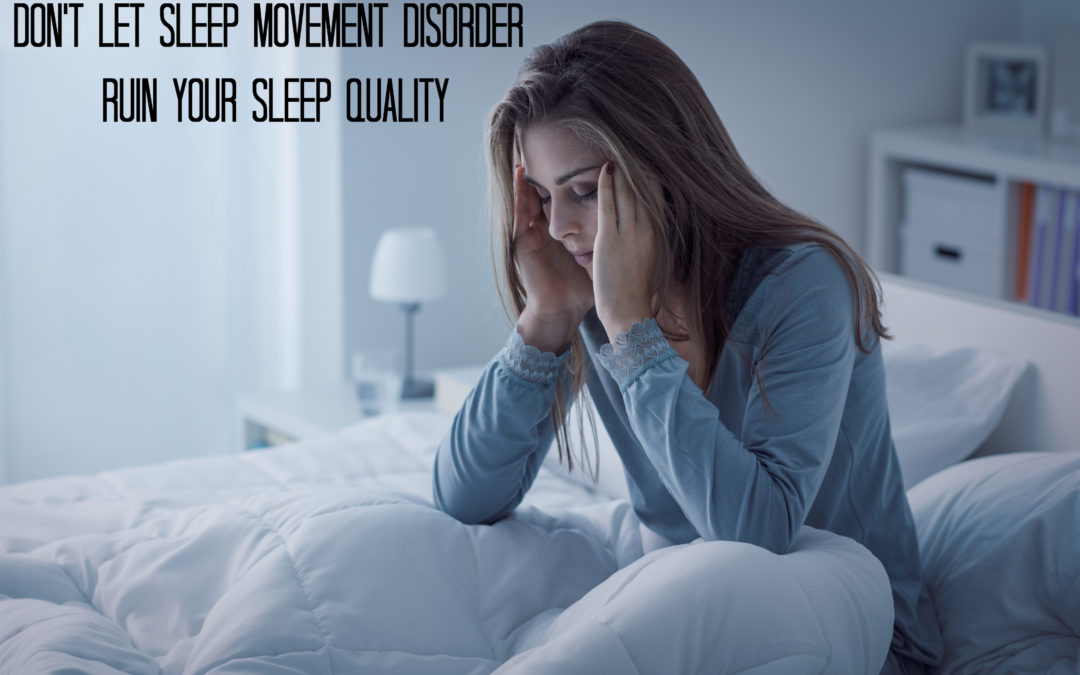By: Lauri Leadley, CCSH, RPSGT- Clinical Sleep Educator|Sleep Coach

Lauri Leadley, CCSH, RPSGT
Who doesn’t enjoy a good night’s sleep? But if you are someone who suffers from sleep movement disorder, getting a good night’s sleep can prove to be a big challenge.
As a professional sleep coach who has helped a number of my patients overcome the specific challenges of sleep movement disorder, I want you to know you don’t have to continue suffering.
An effective treatment plan can help not only effectively address the disorder, but it can help you start sleeping better!
Common Sleep Movement Disorders
Sleep movement disorder can make it difficult for you to either fall asleep or it can prevent you from getting a good night’s sleep since it impacts ability to control movements.
It is a neurological condition which can lead to uncontrollable twitching making it very difficult for a person to either fall asleep or to enjoy restful sleep.
Here are three common sleep movement disorders that you should know about:
Restless Leg Syndrome (RLS)
Restless leg syndrome (RLS) is a condition marked by an uncomfortable sensation in the lower limbs which urges the person to move their legs when awake. And while moving the limbs does offer relief, it is temporary in nature, meaning the sensation often returns. This makes it very difficult for the person to fall into restful, deep sleep.
A few facts about RLS:
- The condition affects around 10% of adults in the US.
- RLS is also known as Willis-Ekbom Disease.
- It is not gender specific; it affects men and women equally.
- It can get worse with age.
- It is not uncommon for RLS to run in the family.
Although the cause of RLS is not known, specific medication and lifestyle changes, including regular physical workouts and avoiding stimulants such as caffeine and alcohol, have found to be highly effective in providing relief from the condition.
Sleep Bruxism
People who suffer from sleep bruxism tend to grind or clench their teeth during sleep. While sleeping, the jaws contract. However, in people suffering from sleep bruxism, the contraction of the jaws can be very strong.
This can lead to the grinding of teeth and the clenching movement of the teeth often associated with sleep bruxism. The danger of such strong jaw movement is that it can wear and damage tooth enamel, lead to facial pain, and also lead to a disturbed sleep pattern.
Because the sound of teeth grinding can be loud, if the condition is very severe, it affects not only the person suffering from the condition, but also impacts their partner. Here are some facts about sleep bruxism:
- Sleep bruxism can happen at any stage of sleep; however, it is found to be more common during the first and second stage of non-REM sleep.
- The condition affects 10% of adults and 15% of children in the US.
- The condition affects both men and women, tending to decrease with age.
- As is the case with RLS, the cause behind sleep bruxism is not well established.
- There is some research evidence which suggests the common triggers for the condition are certain kinds of medication, snoring, anxiety, high stress, smoking, consumption of stimulants, and sleep apnea.
The use of a bite guard, which is a commonly prescribed oral device, has been found highly effective in limiting the symptoms of sleep bruxism, including dental damage and facial pain.
Periodic Limb Movement Disorder
People diagnosed with periodic limb movement disorder (PLMD) suffer from an involuntary movement of their lower legs during sleep. While the condition does not prevent the person from falling asleep, it does severely disrupt their ability to fall into deep sleep at night. A few facts about PLMD:
- The movement is repetitive and involves flexing, jerking, or tightening of the muscles.
- PLDM can occur every 20-40 seconds and last for either a few minutes or up to an hour.
- It mostly affects the lower legs, however, in some cases it can involve the upper arms as well.
- The condition is more common during the non-REM sleep stage.
- If the condition progresses and becomes more severe, it can occur while the person is awake as well.
Sleep is Vital
Sleep movement disorders can impact not only the quality of your sleep and the state of your body and mind at night, but if left unchecked, can start affecting your day-to-day life as well.
Worsening of the condition can lead to mental and physical fatigue, which in turn can trigger other sleep disorders such as insomnia. If the condition is affecting your sleep pattern and impacting your quality of life during the day, it is best to consult with a professional sleep coach.
Valley Sleep Center – We can Help you Sleep Better!
If you suffer from any of the above-mentioned conditions, connect with us at Valley Sleep Center for an effective treatment plan. For a consultation with sleep coach Lauri Leadley, please email us at sleep@valleysleepcenter.com.


